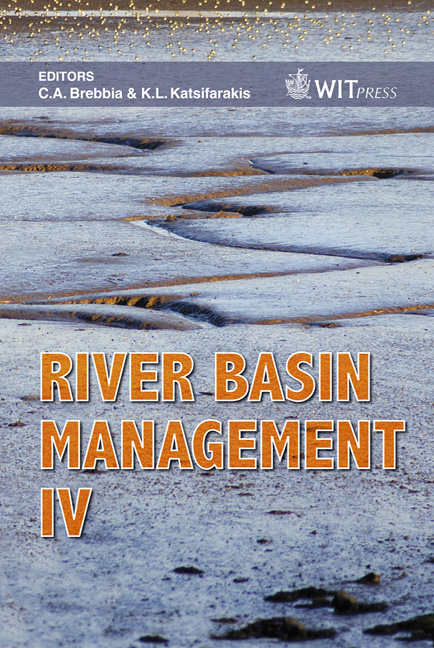River Bed Deformations Near Banks And Hydraulic Structures Due To River Flow
Price
Free (open access)
Transaction
Volume
104
Pages
7
Published
2007
Size
417 kb
Paper DOI
10.2495/RM070361
Copyright
WIT Press
Author(s)
A. E. Schodro
Abstract
Estimating local scouring associated with structures placed in rivers and streams, e.g. bridge piers, bridge abutments, spur dykes etc., is an important facet of their design. However, due to the non-uniformity of alluvial channel bed and bank materials and the complex nature of the fluid–sediment–structure interactions and sediment transport processes, the calculated maximum scour depth for a given flow condition is normally regarded as being approximate, at best. This study investigates the nature of local scouring formed by vortices that are generated behind partially submerged river bed features having slanted ridges, and behind the ridges of scour holes. Modified theoretical relations developed for local scouring are compared with the results of experiments performed in laboratory channels having both rigid and moveable (test-bed) sections. At selected intermediate stages of the bed-scouring process, maximum velocities and turbulence intensities were measured at the bottom of developing scour holes. Two mathematical models for forecasting rearrangement of the river bed in a zone of local deformations are used. One considers scouring in beds composed of relatively homogeneous small sand particles, while the other is appropriate for channel beds comprised of non-homogeneous materials. Keywords: nonstationary local scour, concentrated scour, bridge piers, spur dyke, submerged river-bed installations, river-bed regulation scheme, mathematical modeling.
Keywords
nonstationary local scour, concentrated scour, bridge piers, spur dyke, submerged river-bed installations, river-bed regulation scheme, mathematical modeling.





